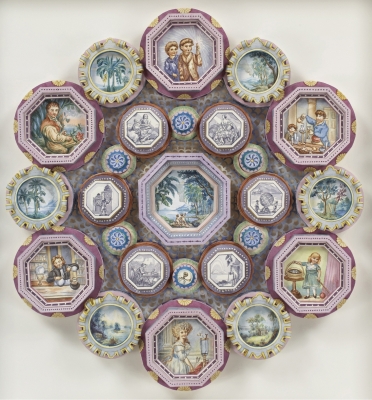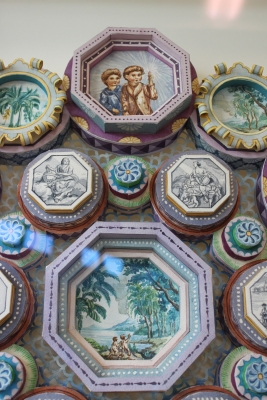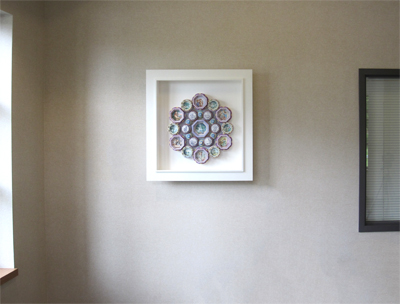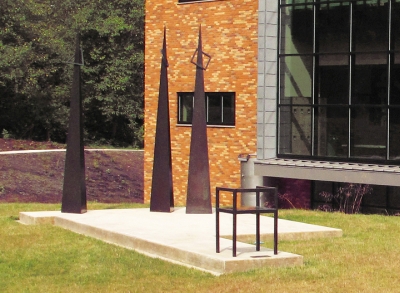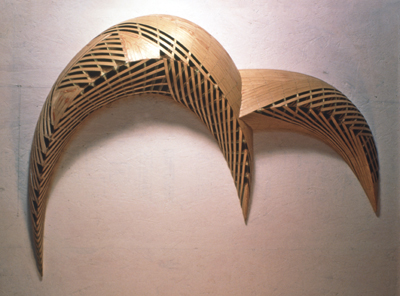About the Artwork
Artist Maki Tamura's Discovery is a twenty-five paneled, three-dimensional, watercolor painting. The artwork depicts western civilization's key scientific discoveries and progress from the 14-19th centuries. Its shape is inspired by neoclassical architecture and also resembles a flower-like mandala. (A mandala is a circular symbol with rings of intricate and symmetrical patterns. In Eastern religions, the mandala represents the universe, wholeness, and totality. It is used for meditation as its detailed layers encourage you to look closely, focusing your thoughts.)
The imagery includes: an erupting volcano and some curious cherubs (center), the mathematician Sir Isaac Newton at a writing desk (lower left), tropical landscapes from the voyages of Captain Cook, the scientists Pierre and Marie Curie (top center and upper left), the German naturalist Alexander von Humboldt (upper left), the French chemist Madame Lavoisier (bottom center), and more. Some of the smaller gray-and-white images illustrate early scientific instruments, which were designed for beauty and function.
A single mosquito subtly disrupts the balanced composition. Tamura notes that this disruption follows the Japanese Shinto tradition, in which breaking a repetitive and decorative pattern is meant to ward off evil. She notes that "this small detail brings these historical vignettes into present, allowing us to meditate on scientific progress and the future of humankind."
This artwork was acquired for the State Art Collection in partnership with Community Colleges of Spokane.
About the Artist
Seattle-based artist Maki Tamura was born in Japan and raised in Indonesia. She attended the University of Washington in Seattle and received her Master of Fine Arts degree in Painting from Tyler School of Art. Tamura combines, subverts, and reimagines elements and influences from different cultures and artistic traditions to create her conceptual installations, paintings, and sculptures.


